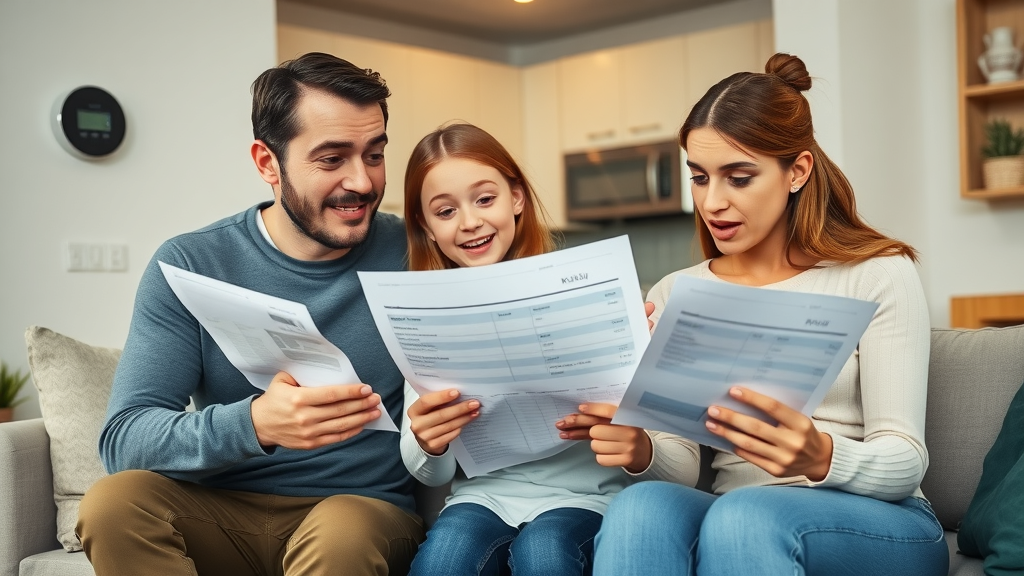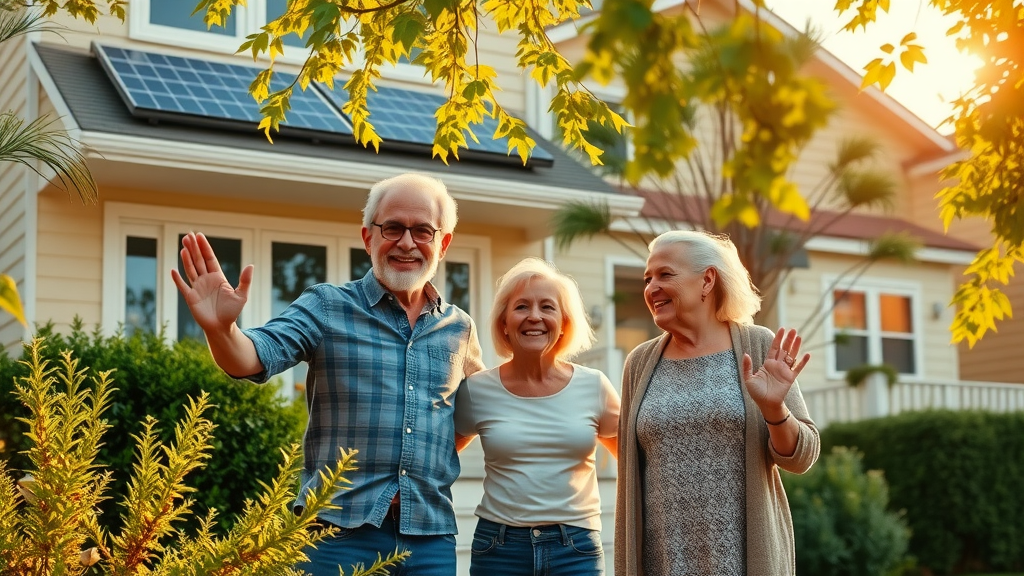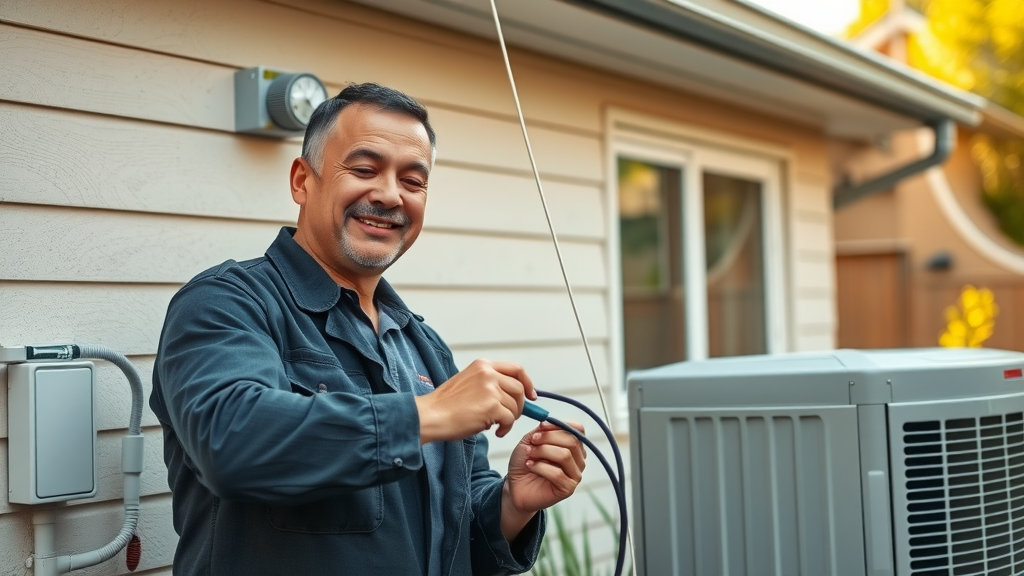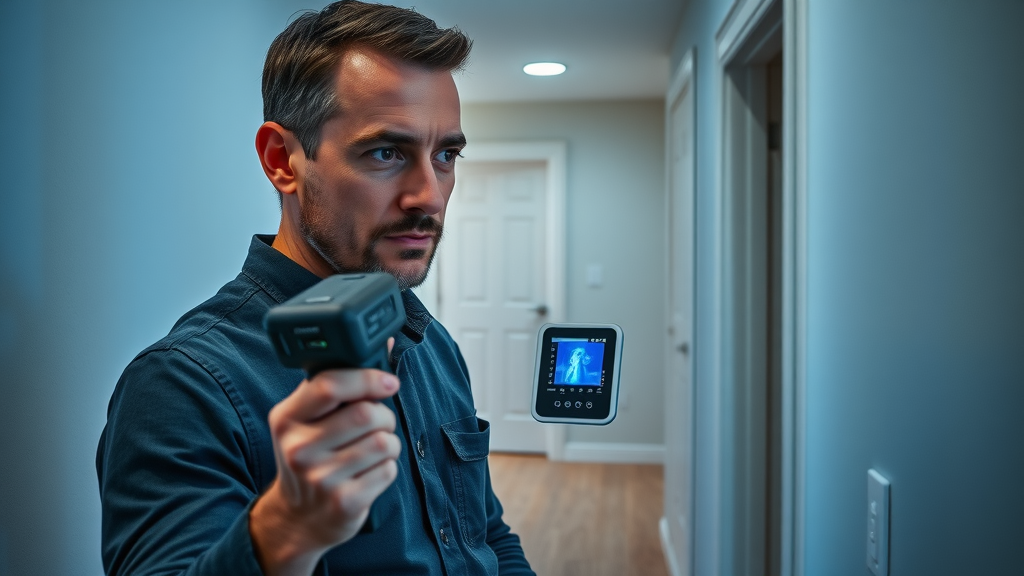Imagine this: the average American household spends over $2,000 a year on home energy bills, but a significant portion is wasted through inefficiency. Chilling, right? If you’re tired of watching your hard-earned money disappear into thin air, it’s time to look at energy-efficient home renovation. These upgrades don’t just cut costs—they transform your home into a comfortable, sustainable, and valuable asset for years to come. Let’s explore how even the smallest change may mean thousands in savings.
Shocking Energy Facts: Why Energy-Efficient Home Renovation Is Essential
"The average American household spends over $2,000 a year on home energy bills, but a significant portion is wasted through inefficiency." – U.S. Department of Energy
Every year, U.S. homeowners pour billions of dollars into heating, cooling, and powering their homes—much of it leaking out through old insulation, drafty windows, or inefficient appliances. While these losses might not be visible, their impact is unmistakable in sky-high utility bills. In fact, the Department of Energy highlights that over 30% of a home’s energy consumption is wasted due to inefficient home features and outdated systems. For those seeking to save money and reduce their carbon footprint, investing in energy-efficient home renovation is not just smart, it’s essential.
With modern energy efficiency measures, it's possible to cut energy use by up to 50%—without sacrificing comfort. That means a better-insulated home, high-performance Energy Star appliances, and advanced heating and cooling systems (like a heat pump) can drastically shrink your bills. Even modest upgrades, such as seals around doors or a programmable thermostat, are powerful. If you’re frustrated by unpredictable bills, the fastest route to a solution is a practical, step-by-step approach to energy-efficient home renovation.

What You'll Learn in This Guide to Energy-Efficient Home Renovation
The core principles of energy-efficient home renovation
Key energy efficiency measures
How to maximize savings and comfort
Available government rebates and incentives
Steps to make your home improvement more impactful
Understanding Energy-Efficient Home Renovation and Energy Efficiency
What Makes a Home Energy Efficient?
An energy-efficient home is built or retrofitted to use less energy for heating, cooling, lighting, and appliances—without compromising the livability or comfort of the space. Key features include high-quality insulation, tight air sealing, triple-pane windows, and state-of-the-art heating and cooling systems. These components help regulate temperature so your HVAC system works less, directly reducing your home energy costs.
Efficiency goes beyond individual products. The way your home is designed—including orientation, window placement, and even landscaping choices—can play a role. Smart solutions like a heat pump, Energy Star appliances, and controlled ventilation make your home Improvement not just about style, but about ongoing energy saving. If you want to make your home truly energy efficient, think of a holistic plan: insulation, appliances, and smart controls all working together.

The Connection Between Energy Star, Energy-Efficient Home Renovation, and Sustainable Living
Energy Star isn’t just a label; it’s a standard set by the U.S. Environmental Protection Agency and Department of Energy to identify products and practices that use significantly less energy than conventional models. By prioritizing Energy Star appliances and certified building products, homeowners not only cut their home energy usage but also reduce the environmental impact of their home improvement efforts. This makes every upgrade a step toward sustainable living.
Choosing energy-efficient home renovation projects—like installing an Energy Star refrigerator or a high-efficiency furnace—means less strain on power grids and fewer greenhouse gas emissions. These decisions ripple outward, benefitting both your wallet and the planet. In regions like the United States, leveraging federal and local incentives for energy efficiency is a practical way to “future-proof” your property while ensuring comfort year-round.
Comparison of Traditional vs. Energy-Efficient Home Renovation Features |
||
Feature |
Traditional Home |
Energy-Efficient Home |
|---|---|---|
Insulation |
Fiberglass batts, often under R-13 |
Spray foam or blown-in, R-30 or higher |
Windows |
Single-pane, aluminum frames |
Triple-pane, low-E, energy-efficient glass |
Appliances |
Standard models |
Certified Energy Star appliances |
Heating and Cooling |
Old furnace or AC, 70% efficiency |
Heat pump, 300% efficiency |
Water Heater |
Standard 50-gallon tank |
High-efficiency heater or on-demand system |
Lighting |
Incandescent bulbs |
LED or smart lighting |
Key Energy-Efficient Home Renovation Projects for Maximum Impact
Upgrade Insulation: Lower Home Energy Loss
The quickest way to enhance home energy efficiency is by upgrading insulation. Poor insulation allows heat to escape in winter and enter in summer, forcing your heating and cooling systems to work overtime. Modern insulation methods—spray foam in attics, blown-in cellulose in walls, and insulated crawlspaces—serve as barriers to energy loss, keeping rooms warmer in the winter and cooler in the summer.
Investing in proper insulation not only boosts your comfort but can save money on monthly bills by up to 20%. It’s one of the few home improvement projects where the return on investment is almost immediate. If you’re tackling energy-efficient home renovation, an energy audit can pinpoint where insulation will be most beneficial, ensuring that you make your home more comfortable—and affordable—year-round.
Install Energy-Efficient Windows and Doors in Your Home Improvement Plans
Old windows and doors can be responsible for up to 30% of a household’s heat loss. Swapping them for triple-pane, low-E windows and well-sealed doors is more than just a stylish change; it’s a structural improvement that dramatically boosts energy efficiency. These advanced units reduce drafts, hinder heat transfer, and block harmful UV rays. The result is a consistent indoor climate and tangible home energy savings.
When considering your home improvement strategy, always check for available Energy Star ratings and state incentive programs. These often defray installation costs, making premium windows and doors an accessible upgrade for many homeowners. In addition to savings, modern windows also cut down on noise and add property value—delivering comfort, tranquility, and returns for years.

Smart Thermostats and Efficient Home Heating and Cooling Solutions
The advent of smart thermostats has transformed the way we use heating and cooling systems. Unlike manual thermostats, these devices learn your schedule, adjust automatically, and can be managed remotely via smartphone. This intelligent climate control allows you to only heat or cool your home when needed, sharply reducing energy waste.
Upgrading your thermostat is among the simplest—and cheapest—energy-efficient home renovation steps. Many models are compatible with advanced systems like heat pumps and zoned HVAC, offering granular control of your home’s energy usage. Paired with efficient heating devices, a smart thermostat can deliver as much as a 10% reduction in home energy bills, making it a critical component for anyone seeking lasting ©Energy Saving© improvement.
Heat Pump Systems: The Cornerstone of Energy-Efficient Home Renovation
Heat pump systems stand out as one of the most powerful upgrades for an efficient home. Unlike traditional furnaces or ACs, a heat pump transfers heat instead of generating it, providing up to three times more energy efficiency. In moderate climates, a single system can manage both heating and cooling needs year-round—dramatically slashing your energy consumption.
The upfront investment in a heat pump can be offset by multiple federal and state rebates, especially for high-performance or all-electric units. Whether you opt for an air-source or ground-source heat pump, you’re not just saving on energy bills; you’re reducing maintenance, boosting comfort, and even improving indoor air quality. This is a must-have for any energy-efficient home renovation plan.

Efficient Water Heater Replacements: Essential Home Energy Upgrade
The water heater is the second-largest energy user in most homes. Switching to a high-efficiency water heater—like a heat pump water heater or a tankless (on-demand) system—can cut your water heating costs by up to 50%. These new models use less energy to deliver the same (or greater) hot water supply, and many qualify for significant rebates at both federal and state levels.
When considering energy-efficient home renovation, don’t overlook this critical upgrade. Beyond cost savings, these systems can last longer, require less maintenance, and are better for the environment. Check for Energy Star certification when you select your replacement, and consult official sites and certified contractors to maximize incentives and ensure top performance.
How to Make Your Home Renovations More Energy-Efficient
Conducting a Home Energy Audit: Bring in a qualified professional or use a DIY kit to analyze your home energy consumption, pinpointing leaks, outdated systems, and areas for improvement.
Prioritizing Upgrades Based on ROI: Focus on changes with the highest return on investment, such as insulation, air sealing, or upgrading a water heater or heat pump.
Selecting Energy Star Products: From appliances to windows, choose Energy Star certified products to guarantee energy savings and eligibility for rebates.
Utilizing Professional Contractors Familiar with Energy-Efficient Renovation: They’ll ensure work meets code, qualifies for incentives, and delivers peak performance.
Tracking Performance Post-Renovation: Use smart meters, reviews, and utility data to measure ongoing energy and cost savings.
Financial Incentives for Energy-Efficient Home Improvement
Understanding the $4000 Breaker Box and $2500 Electrical Wiring Rebates
The federal government now offers up to $4,000 in rebates for breaker box upgrades and $2,500 for approved electrical wiring renovations. These incentives encourage homeowners to electrify their homes (making it possible to install a heat pump or EV charger in the future) and boost overall energy efficiency. Not only do these upgrades modernize your home, but they also pave the way for further savings on home energy bills and additional improvements.
These rebates are often stackable with local programs and may require documentation from contractors. Always consult official gov websites or securely connected resources to ensure eligibility and maximum rebate capture.
California Home Efficiency Program: Benefits and Eligibility
For residents of the Golden State, the California Home Efficiency Program provides extra incentive to make your home more efficient. The program offers rebates for qualifying projects like enhanced insulation, high-efficiency water heater replacement, heat pump installation, and more. Eligibility is often income-based, and upgrades must be performed by approved contractors to qualify.
The result? Major reductions in home energy bills, improved comfort (even during heat waves or cold snaps), and a healthier, greener living environment. By taking advantage of these initiatives, you’ll save money long-term and future-proof the value of your biggest investment.
"Investing in energy-efficient home renovation can increase your property value, lower annual bills, and potentially qualify you for local rebates." – Certified Home Energy Expert
Case Study: Real Savings from Energy-Efficient Home Renovation
A Family’s Journey from High Bills to an Efficient Home
The Martinez family struggled with high energy bills, drafty rooms, and dated appliances. After a comprehensive home energy audit, they strategically replaced attic insulation, installed triple-pane Energy Star windows, swapped an old furnace for a heat pump, and upgraded their water heater. The cost after rebates and incentives was surprisingly manageable.
Within the first year, the family’s annual home energy expenses dropped by 45%. Not only did they save money, but their home felt warmer in winter, cooler in summer, and quieter throughout the day. The comfort improvements and utility savings continue yearly, and their upgraded home now qualifies for various state and local rebates.

Step-By-Step Guide: Start Your Energy-Efficient Home Renovation Today
Assess Your Current Home Energy Efficiency: Begin with a professional energy audit or use online tools to discover hidden inefficiencies.
Research Rebates and Incentives: Visit state, local, or official gov websites to learn about available programs in your area.
Plan and Prioritize Upgrades: Focus on high-impact, high-ROI improvements like insulation or system replacements.
Work with Qualified Professionals: Always hire certified contractors with experience in energy-efficient home renovation.
Monitor Ongoing Energy Use: Use smart meters or utility dashboards to track savings and keep optimizing.
People Also Ask: Your Energy-Efficient Home Renovation Questions Answered
What qualifies as energy-efficient home improvements?
Energy Star appliances
Heat pump systems
High-performance insulation
Triple-pane windows
Solar power and more
Qualifying energy-efficient home improvements include installing Energy Star appliances, high-efficiency heat pump systems for heating and cooling, upgraded insulation that exceeds current building codes, triple-pane windows, and renewable energy sources like solar panels. These upgrades are recognized by federal, state, and local programs and may make your home eligible for valuable rebates or tax credits.
How to make home renovations more energy-efficient?

Conduct an energy audit
Upgrade insulation
Use Energy Star products
Install energy-efficient heating, cooling, and water heater systems
Seal air leaks
Begin your energy-efficient home renovation by scheduling a home energy audit to target areas of waste. Prioritize insulation upgrades, install air and vapor barriers, and focus on high-value replacements—like switching to Energy Star appliances, heat pumps, and energy-saving water heaters. Sealing doors, windows, and attic spaces makes a significant difference. The more you integrate these practices into your home improvement approach, the bigger your savings.
What is the $4000 rebate on breaker box upgrades and $2500 rebate on electrical wiring?
Federal incentives for specific electrical upgrades supporting further home electrification and energy efficiency
These federal incentives are designed to help homeowners update their electrical infrastructure, making it possible to switch to all-electric, energy-efficient home appliances—including heat pumps and tankless water heaters. Qualifying upgrades prepare your home for current and future energy efficiency projects and are a crucial step for anyone looking to electrify their household.
What is the California Home Efficiency Program?
A state-backed initiative offering rebates for qualifying energy-efficient home renovation projects to improve overall home energy efficiency
This program provides California homeowners with financial assistance for approved upgrades—ranging from insulation and window replacements to heat pump and water heater installations. Participating can cut upfront home improvement costs and help make your home consistent with modern energy efficiency standards.
FAQs: Energy-Efficient Home Renovation
What renovations qualify for federal or local tax credits? Most energy-saving upgrades recognized by Energy Star, including heat pumps, water heaters, insulation, and certain windows, may qualify for credits.
Can I finance an energy-efficient home renovation? Yes, many lenders now offer green home improvement loans with favorable terms, and some states provide special financing packages for qualifying upgrades.
How much energy can I expect to save? Most homes can reduce their energy consumption by 20-50% through layered improvements, depending on the age of the property and scope of upgrades.
Is an energy-efficient home worth the investment in every region? Yes—while savings can vary by climate and utility costs, an efficient home generally offers higher resale value, better comfort, and lower long-term expenses in all regions.
Key Takeaways: Energy-Efficient Home Renovation Tips and Savings
Energy-efficient home renovation reduces bills and environmental impact
Upgrading to heat pumps, smart thermostats, and insulation has the highest ROI
Rebates and incentives can offset upfront costs
Every home can benefit from a tailored efficiency upgrade plan
Conclusion: Start Your Energy-Efficient Home Renovation Journey Now
"Start saving money, adding comfort, and lowering your environmental impact today with an energy-efficient home renovation."

Ready for Lower Bills and More Comfort? Take the First Step Towards Energy-Efficient Home Renovation
Don’t wait for the next utility bill shock. Begin transforming your house into a high-performing, energy-efficient home now. Schedule an audit, leverage available rebates, and work with certified pros to unlock comfort, savings, and peace of mind. Start your energy-efficient home renovation today and experience the difference year-round!
To further enhance your understanding of energy-efficient home renovations, consider exploring the following resources:
“Renovating your home? Make sure you understand how to insulate your home so you can save energy and boost your bank balance” (homebuilding.co.uk)
“How to Lower Your Home Energy Bill” (time.com)
These articles provide practical advice on improving home insulation and implementing energy-saving measures to reduce utility costs. If you’re serious about reducing your energy bills and enhancing home comfort, these resources will offer valuable insights and actionable steps.
 Add Row
Add Row  Add
Add 




Write A Comment